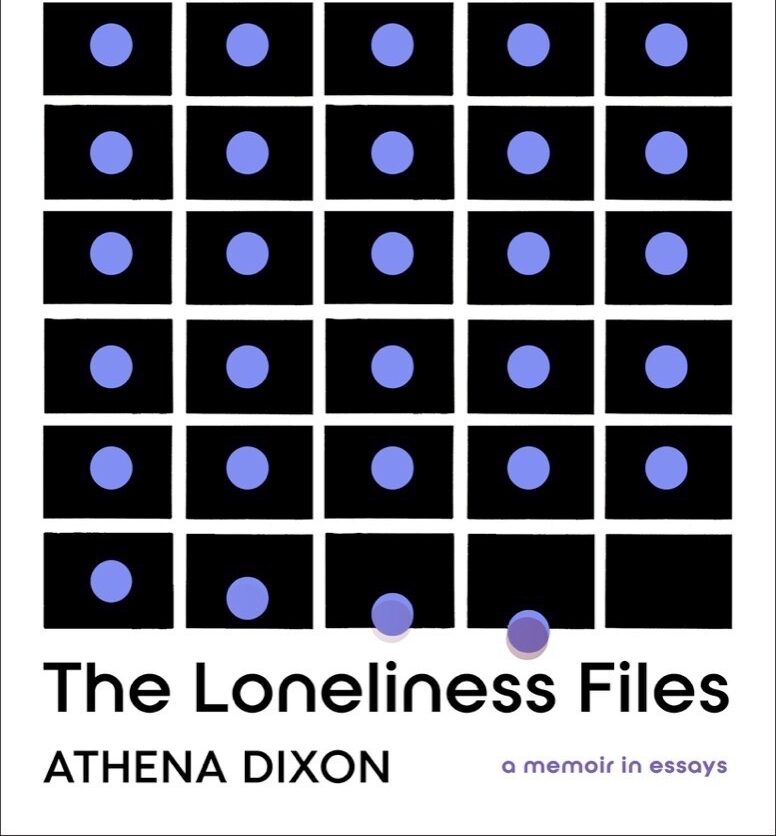By the time I wrote the final essay in The Loneliness Files, my mind had peeled back all the layers of how loneliness, isolation, and disconnection manifested in my life. Where I ended up was really examining my need for a new version of home. I battled between returning to where I’d grown up and remaining in the city I’d chosen to put down roots. Each place held its own advantages and disadvantages and I still haven’t made a decision about where I’ll land. Even if I’m still in limbo, I’m learning what home means for me and how it shows up in both my body and my mind.
Over the nearly three years it took to complete work on the book, I drew upon music, movies, books, and other media to sort out my thoughts and create the framework. And since its completion I’ve been glad to continue to delve into works that speak to my feelings. Most of the works on this list are perennial favorites of mine. They are books I’ve returned to time and again because they parse out in beautiful ways what home can or should be. Some of the texts offer keen views of the necessity of letting go of what you’ve always known to create a better place. Others honor what is valuable and necessary about our homes even if we are seeking to make them in our own image.
***
Their Eyes Were Watching God by Zora Neale Hurston
Janie’s story is not only my favorite novel, it is a quintessential view of home—how it is forced upon us, how we can run from it, and how it can take many forms until we find a place that best suits our needs and desires.

Men We Reaped by Jesmyn Ward
Two of my annotations in Ward’s book are fairly simple. Underlined are the phrases “You always come back. You always come back home.” and “…watched the road. We listened intently for a whoosh, for a loud bang, for a flash of color, for anything that would signal our future.” There is a need for setting out into the world toward something new and the same need to find footing and respite in the place you’ve always known. Men We Reaped speaks to both of these needs beautifully.

How to Slowly Kill Yourself and Others in America by Kiese Laymon
While the entirely of this book is essential reading, the essay “Echo: Mychal, Darnell, Kiese, Kai, and Marlon” is a steadfast reminder that home can take many forms. Through the letters in this piece, readers are reminded that sometimes home is not always a physical space. It can be a connection of thought, support, and communal love.

The Ballad of Perilous Graves by Alex Jennings
Sometimes there is comfort and connection in the mystical and partially unknown places of our homes and all the lives and people who’ve floated through the places in which we reside. This story, full of magic and discovery, speaks so much to honoring these spaces and maintaining them by keeping what has always been true about them alive.

Another Brooklyn by Jacqueline Woodson
This book reads like a dream even in the darkest spaces. The language is poetic and pulls me back to my oldest friendship and the hazy space of wonder, fear, and unknowing in which we were immersed.

Irregulars by Kerry Trautman
One of the highlights of my frequent visits, and eventual move, to New Jersey was the diners. The familiarity of a restaurant full of people in their own worlds yet still moving in orbit with others was a comfort even so far from home. Irregulars captures this communal space so well. As it shifts between the viewpoints of both diners and waitresses, it gives light to the individual paths that led each person to their respective meal or shift while deftly slipping between the lives intertwining for even the briefest of time.

How to Sit by Tyrese Coleman
In the Author’s Note, Coleman writes, “Memory is not static. Memories are not facts.” The same is true of home. What it means physically and mentally is just as fluid. This collection does an excellent job of leaning into the uncertainty of memory and how it ripples across a life.

Sonic Memories by Cija Jefferson
Small but mighty, Cija Jefferson’s Sonic Memories has stuck with me since I first picked it up in 2016. The idea of home runs deep in this book—what it is, how it sounds and feels, the trepidation of leaving and returning, and the desperate need for it in order to ground yourself. The book makes excellent use of the senses to place readers directly into a homescape that very much belongs to Jefferson, but it is also a lens through which readers can see their own destination.

When Chickenheads Come Home to Roost by Joan Morgan
Finding a text that is like opening a new door into yourself is a homecoming of sorts. Joan Morgan’s book cracked open a part of me as a young woman trying to put her self-image and place in the world into perspective. It is a book I’ve returned to several times since my first encounter because how I fit into the spaces around me are always fluid and the book remains a touchstone to help guide me.

Local by Brian Wood and Ryan Kelly
In both the art style and the subject matter, this graphic novel blankets readers in a claustrophobic life that seems to be growing tighter and tighter at every turn. As the story progresses, the main character Megan’s search for a place of stability and belonging despite all the false starts is one that is easily relatable.

Athena Dixon is the author of The Loneliness Files: A Memoir in Essays (Tin House).




